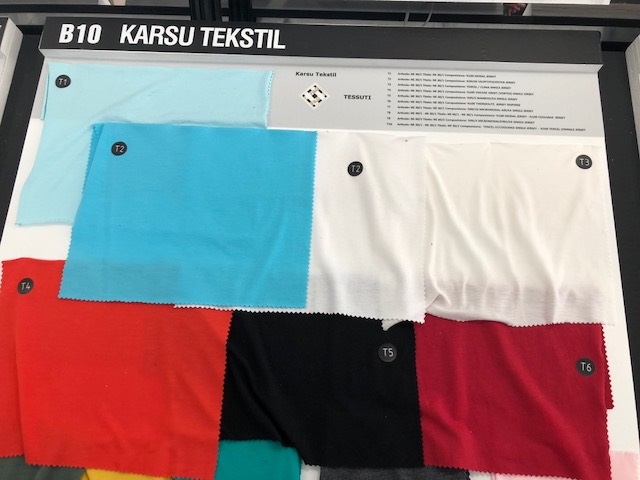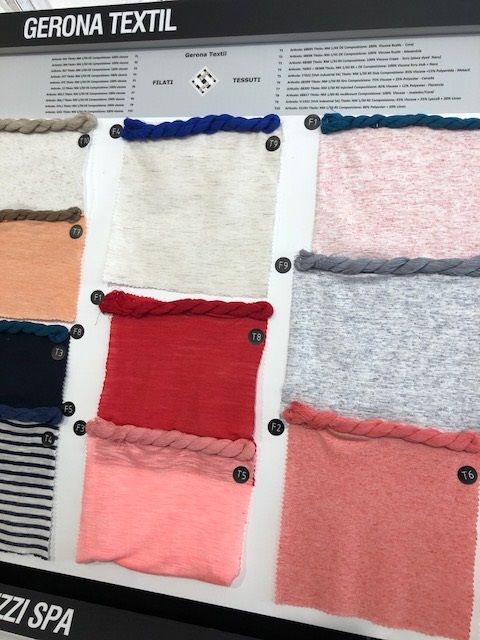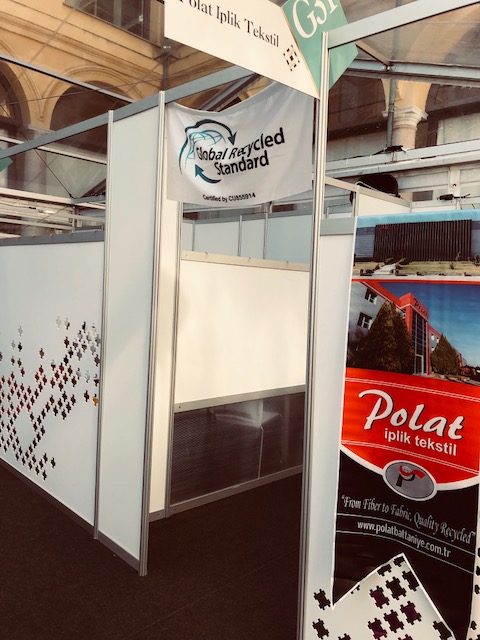
Responsible yarns and knitwear at SPINEXPO
Opinion


Filo marked 50 editions of bringing the latest yarns to the industry, celebrating the fact that it has grown steadily every year.
15th October 2018
Janet Prescott
|
Milan
Filo marked 50 editions of bringing the latest yarns to the industry, celebrating the fact that it has grown steadily every year. Filo began 25 years ago by showcasing mainly Biella mills, which were producing yarns for weaving and regularly attracting the menswear trade; Now many collections present knitting yarn, fancies and blends for jersey and are based all over Italy, Turkey, Switzerland, Belarus, Sweden and other countries. This year a representation from Nepal, exhibiting mainly synthetic yarns, for the first time.
Natural fibres were the most prevalent, with the irregularities of linen and hemp etc chosen for a refined rustic look. Ultra-light Merino wool was frequently blended with viscose or other natural fibres. Structure was obtained with flaming and roving and 2 or 3 ply twisted yarns and yarns with a raffia effect.
Tollegno 1900 is wool orientated. Their Extrafine Merino Yarn for jersey followed up good results for knitwear for Autumn/Winter with a quality Harmony 4.0, now available in 1/28 and 1/44 gauges aimed at sport garments and also accessories.
Technical content was important. Qualities of easy care, water repellence, crease resistance and hyperelasticity were emphasised to enhance the intrinsic elements of naturals. High tenacity and metallic looks were achieved through polyester and polyamide yarns. Synthetics were most often used for aesthetic effects, rather than price considerations, it was stated, though price was in the background of many exhibitors’ calculations.

Colours for summer continued the recurring fashion for shine and fancy elements. The Lurex company in particular is always a draw on its stand, with examples of striking fabric often destined for couture, showing off the latest developments. This year trends included different shades of gold, silver, copper and brass- coloured yarns.as the taste for overt luxury re-ignites.
In the same vein, Ilaria, synonymous with intricate fancies reported that, “the signs are good”. Adding that “Mohair is still trending and sampling for next year; the price has risen, but it is still in demand”. Blends of mohair and wool for both knitting and weaving were offered by Ilaria.

Deep colours of green, red, blue and a light mustard, and shades of lilac and purple were trending, with melange yarns and jersey with paler contrast flamme effects in many collections. Metallic shades and sparkling effects gave a reflective element and transparent looks from see-through polyester.
Classic yarns for menswear used fine wool, linen and long staple cotton.
Gianni Bologna, Filo’s long-time design consultant, arranged the latest yarns and prototype fabrics from the mills into coherent collections on boards for each exhibitor in the trend area. They provide an easy reference point for weavers and knitters to check out the latest yarns to customise their collections.

For the 50th edition, Bologna selected harmony and beauty as this theme expressed in three “itineraries”, Spice Route, Silk Route, the source of splendid and imaginary stories and subjects which for centuries have been sitting deep in the DNA of our imagination, and Route 66 that “formed a large part of our current cultural references”.
The words innovation, sustainability and performance remain the mantra of the new season and in this there was much to write about at Filo. Sustainability was very much on the agenda, with companies keen to put forward their credentials, whether cotton spinners using up to 30% less water, or dyers making use of natural pigments and developing cold water processes.

Partnerships with technical institutions are growing, mills working in collaboration with universities in Italy, like Roica with a specific brief to develop digital innovation to reach the consumer with the message of responsibility, and sustainability. The company produces 50% of yarn content from the recycling of pre-consumer waste and has a Hohenstein Environmental Compatibility Certificate.
Eco yarns were important, such as 70% organic cotton/30% recycled PET. Marchi & Fildi had various Ecotec recycled cotton examples.
Gerona, Spain, with a capacity of spinning 6 million kg of yarn is heavily focused on sustainability and post- and pre-consumer recycling. It includes SeaQual the fibre from plastics fished out of the sea.
An early signpost is that OJSC Belarus showed cotton yarn for knitted furnishing fabric, tipped as a growing area throughout the yarn industry.
Blends were a strong feature. Fancy yarns were aimed principally at knitwear, with mottled colours, loose twists and small knops. Contrasts with opaque and shiny effects gave three dimensions as well as shaded yarns with chromatic effects. Fil-3 presented two new yarns for 2020 in linen and viscose in melange and tweed variations, selecting the viscose content for the season’s shine.
Sudwolle presented several new blends; 58% linen/42% Tencel, or 32% linen/33% wool/34% silk; and special wool/cotton/ Tencel /nylon with different looks and handles.
Innovators Pozzi Electa had summer cotton blended with various animal fibres – wool. Cashmere or angora, with a 60% Merino/40% nylon and 70% baby alpaca/30%silk.

Business intelligence for the fibre, textiles and apparel industries: technologies, innovations, markets, investments, trade policy, sourcing, strategy...
Find out more